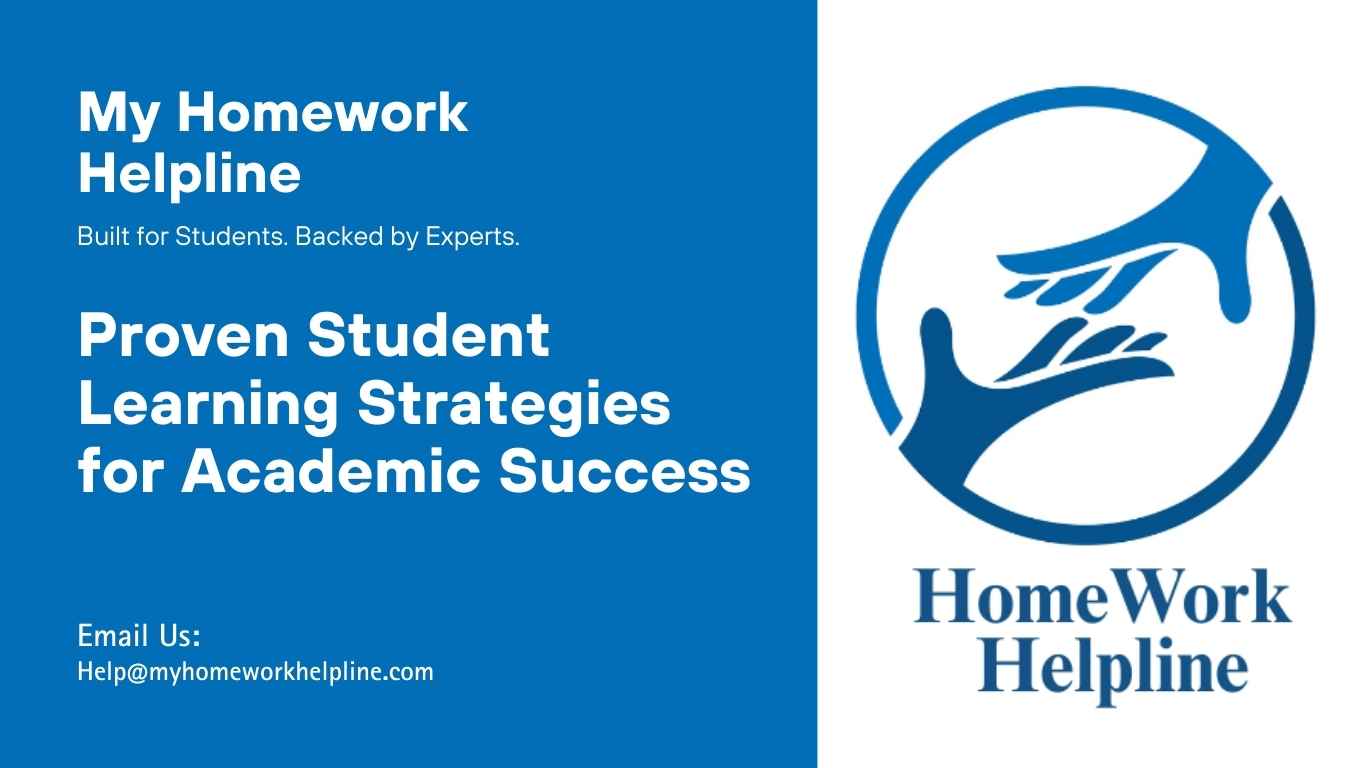Effective Student Learning Strategies to Improve Performance Essay
Student learning and performance differ. Learning refers to a permanent shift in behavior or knowledge, which should be or is the goal of education. Performance entails temporary changes in behavior or knowledge that can be observed or measured during or shortly after instructions (Paszke et al., 2018). Therefore, learning is long term-where, whereas performance is short-term. According to Patzke et al. (2018), teachers can only know whether learners have learned something after a given period when they do not utilize or think about that particular information. Thus, the notion that performance and learning are positively related. When students understand a given concept and perform successfully on an immediate assessment, one can conclude that they are more likely to have learned something. Performance should only be a rough measure of learning as decades of research suggest otherwise (Paszke et al., 2018). This paper aims to develop effective strategies to improve student learning. Different studies suggest effective methods for educating learners; since external environments such as culture highly impact student learning, strategies such as incremental learning perspective are essential in boosting student confidence and hence improving their learning.
If you’re working on an assignment about student learning strategies or need extra support with homework assistance, we can help you simplify complex concepts and build strong academic skills. Our resources guide you through executive functioning, performance improvement, and cultural aspects of education. Explore how our psychology homework helpline can make your assignments easier, more effective, and tailored to your learning goals.
Learning and performance can be opposites. Therefore, educators can enhance learning by impairing performance. Performance success can indeed hinder to support of learning improvement (Paszke et al., 2018). Progress during learning lessons can mislead in reference to what is retained and thus can fool educators and learners alike. This is particularly true when performance success is attained through structured teaching aims to result to rapid progress. For instance, repeating a problem in class can result to rapid, yet fleeting, success in short-term performance. Long-term learning can be developed by intentionally limiting short-term performances. Such learning strategies are referred to as desirable difficulties (Paszke et al., 2018). The strategies are desirable because they result in better knowledge retention and transfer and tend to be difficult because they pose challenges that slow the current rate of progress and ignite more mistakes during training or instruction. Essentially, this concept embodies the adage, no pain, no gain. It also aligns with physical exercise, whereby taking the stairs is more beneficial than taking an escalator. Thus making learning more challenging leads to better retention.
The level of challenges matters. For students to effectively benefit from the desirable difficulties, they must be equipped with the necessary background knowledge and skills to counter the challenges. Examples of disabled difficulties include spacing repetition over time to avoid cramming, mixing up varying but related to-be-learned topics rather than separating them, and testing material rather than presenting it.
Parents can improve their children’s executive functioning. Executive functioning refers to skills that allow us to focus, prioritize, plan, self-regulate emotions and behaviors, work toward goals, adapt to expected and new situations, and ultimately engage in abstract planning and thinking (Takacs & Kassai, 2019). The type of functioning can be significantly hindered or fostered by environmental factors, including family structure, early childhood stress, and educational opportunities. Thus, the skills are incredibly amenable and malleable to improvement. Research has shown that children’s executive functions can be boosted by adhering to structured educational, socioemotional, and neuropsychological programs (Takacs & Kassai, 2019).
Parents can use computerized programs to boost executive functioning. The program can include Cogmed neurofeedback or cognitive training such as Mightier (Takacs & Kassai, 2019). Such programs compose child-friendly interventions comprising relatively intensive training, of specific executive functions, including impulse control or working memory. Interventions that include physical activities such as yoga practice or aerobic exercise, in addition to organized sports activities, including basketball and soccer, and martial arts, tend to improve executive skills. They require children to hold strategies and rules in mind and adapt flexibility to others’ actions while monitoring their behavior and performance (Takacs & Kassai, 2019). Physical activity is also essential in blood flowing to the brain and encouraging emotional well-being, consequently benefiting children’s executive functioning.
Stress has been found to ‘freeze’ a child’s ability to apply executive functions appropriately. Anxiety and chronic stress resulting from school, family, or health issues, play a central role in risking executive dysfunction throughout the life span, especially in children whose executive functions that allow them to manage stress are yet to mature (Takacs & Kassai, 2019).
Education theory help student and teachers develop learning approaches. Contiguity theory is among the several known education theories and is highly associated with all or none perspectives of learning. The theory specifies that a combination of stimuli that accompanies a movement, in recurrence, tends to be followed by the movement (Perez & Dickinson, 2020). Thus, all learning has consequences of association between a particular stimulus and response. Perez & Dickinson (2020) explains that stimuli and their direct responses impact specific sensory-motor patterns and that what is learned are movements rather than behaviors. Therefore, based on the theory, punishment and rewards do not play a significant role in learning since they occur after the linking between response and stimulus has been made. Learning tends to occur in a single trial- all or none. On the other hand, since stimulus patterns are slightly different, several trials may be required to produce a general response. A principle associated with the theory is postremity, which notes that we tend to learn the last thing we do when responding to a given stimulus situation (Perez & Dickinson, 2020). The theory suggests that forgetting results from interference rather than the passage of time, as stimuli tend to be associated with new responses. Behavioral theory does not view learning from an all-or-none perspective, as it notes that people acquire behavior through interactions with the environment. The theory aligns with the incremental perspective whereby all facets of knowledge are believed to be received through regular treatment, with a regular inflow of new knowledge building upon past knowledge Perez & Dickinson (2020). Thus, while all or none perspective discounts chunks of information gathered and focus on the last stimuli, incremental perspective understands that the constant inflow of information, with time, reinforces knowledge over a given subject. Thus, if that information is not utilized over time, it is lost, hence the need for a continuous inflow of information. All or none perspective encourages low self-esteem among individuals as it discounts significant learning progress based on insignificant failure. On the other hand, an incremental perspective tends to focus on little progress, reinforcing self-esteem among learners.
In education, culture refers to the beliefs and values that students bring to the classroom. Culture is not genetic but a social contract; most students tend to have at least three, including school, peers, and home (Illeris, 2018). The behaviors and language of each are different, and for most students, the language at home is usually divergent; when entering school is like moving to a foreign country and speaking a different language. For instance, some students come from a home where they are not allowed to raise an opinion; thus, speaking and participating in class may seem wrong. Therefore, what some teachers perceive as disorders may be a cultural difference. To improve student learning through behavioral, personal, and environmental variables, educators and parents must consider cultural influences when developing learning strategies. Strategies that educators can use to overcome these barriers include having open feedback. While feedback on students’ work and behavior is expected, student feedback should also be taken into account. Parents and teachers must take feedback from students about their general mannerisms, which gives insight into what they are doing well and what to improve (Illeris, 2018). Parents and teachers can provide positive reinforcement that allows strong learning culture. This can be done by offering extrinsic motivators, including public praise. Parents and teachers should set high academic expectations for their students, explain the expectation to the learners, and explain to them that they are always available to help. Teachers can arrange the physical environment in class to minimize stress and make students feel more comfortable. For instance, teachers can organize classrooms by assigning seats to students or establishing a routine for collecting and passing out work. Notably, both parents and teachers should build positive relationships with students.
In conclusion, strategies that help build student confidence should be used in school. Such an approach help student interact effectively with both their parents and educators. Positive reinforcement also helps build trust allowing the development of rapport with the learners hence allowing parents and teachers to interact individually with the learners. These strategies are necessary to build a positive learning culture that can help solve environmental barriers that student experiences when they are caught up between different school and home cultures.
References
Illeris, K. (2018). An overview of the history of learning theory. European Journal of Education, 53(1), 86-101.
Paszke, A., Gross, S., Massa, F., Lerer, A., Bradbury, J., Chanan, G., … & Chintala, S. (2019). Pytorch: An imperative style, high-performance deep learning library. Advances in neural information processing systems, 32.
Perez, O. D., & Dickinson, A. (2020). A theory of actions and habits: The interaction of rate correlation and contiguity systems in free-operant behavior. Psychological Review, 127(6), 945.
Takacs, Z. K., & Kassai, R. (2019). The efficacy of different interventions to foster children’s executive function skills: A series of meta-analyses. Psychological bulletin, 145(7), 653.

